Let’s be honest — debates over native vs. cross-platform app development are practically a sport in engineering circles. You’ve probably heard them many times yourself.
Cross-platform development is gaining ground with real promises like one codebase — two platforms, faster time to market, and fewer resources tied up in repetitive work. On top of that, for businesses, especially those building MVPs or mobile products with shared logic, app development cross-platform ticks many boxes.
In this article, we’ll show you how to make cross-platform development work for your business, learning how to overcome limitations, and focus on the real strengths of this development approach.
What is a cross-platform app?
A cross-platform app is a software type that runs on more than one operating system — usually iOS and Android — using a single shared codebase built with the help of different frameworks. This is a part of what’s called multi-platform app development, where developers aim to cover mobile, web, desktop, and even embedded systems with as little duplicated code as possible.
This approach has become pretty popular mainly because it offers 20–50% cost savings compared to native development. It also helps speed up development and deliver a consistent experience across devices. If you're wondering what cross-platform apps people actually use, think of Instagram, Shopify, Google Ads, eBay Motors, just to mention some.
What is cross-platform app development?
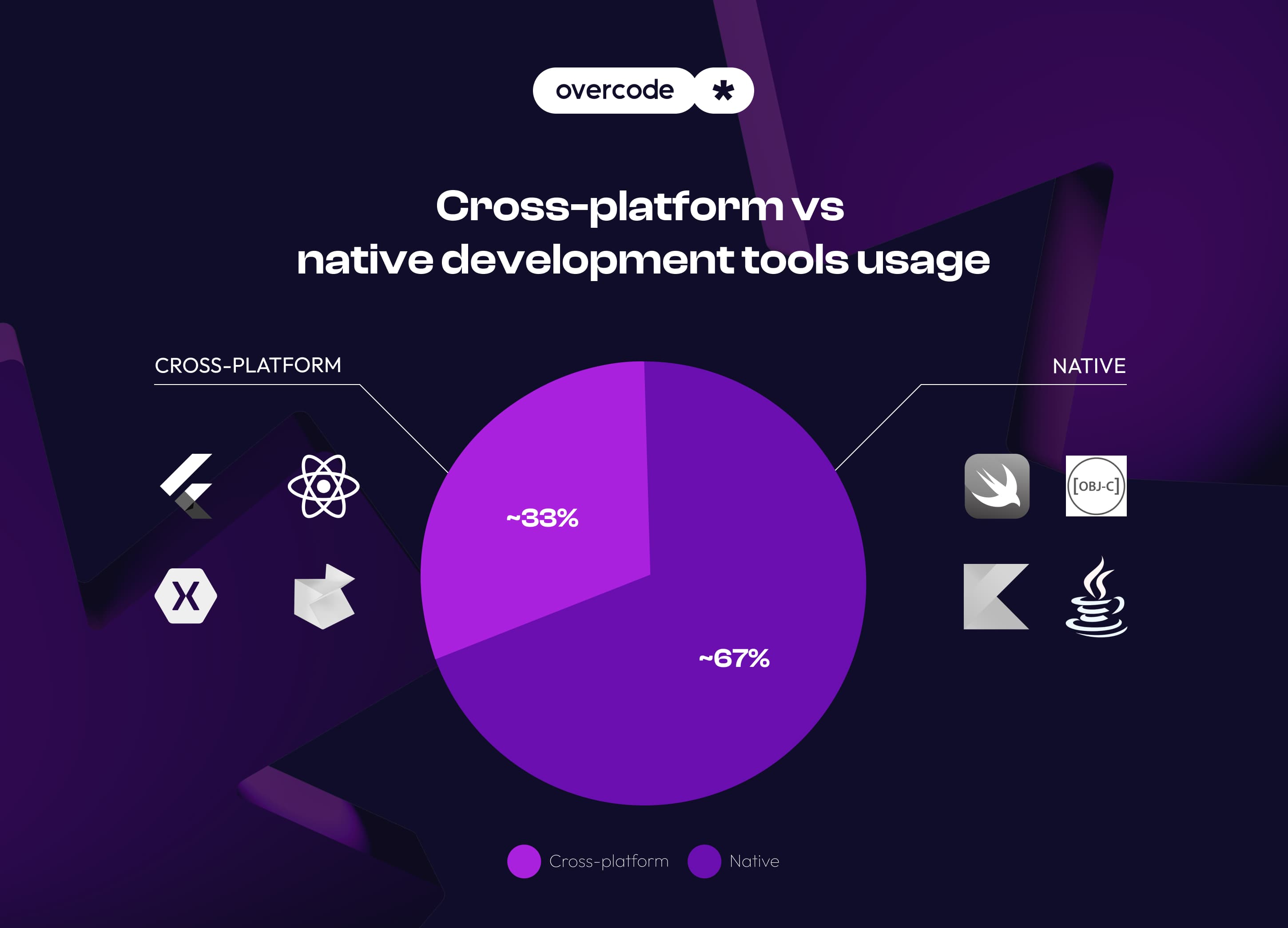
Cross-platform app development means using a single codebase to build apps so that they can run on multiple operating systems. Instead of developing native apps, say, for iOS and Android, engineers use a common language and framework to cover both platforms. This approach allows for relatively fast development with low resource usage, and you can still maintain consistency between platforms.
Choosing the right cross-platform framework
The right choice of framework to create a cross-platform app depends on your team’s preferred tech stack, project goals, and how much you want to reuse the code across platforms. There are plenty of options out there, but below, we’ll cover the most popular ones recommended by the Overcode engineering team for specific business cases.
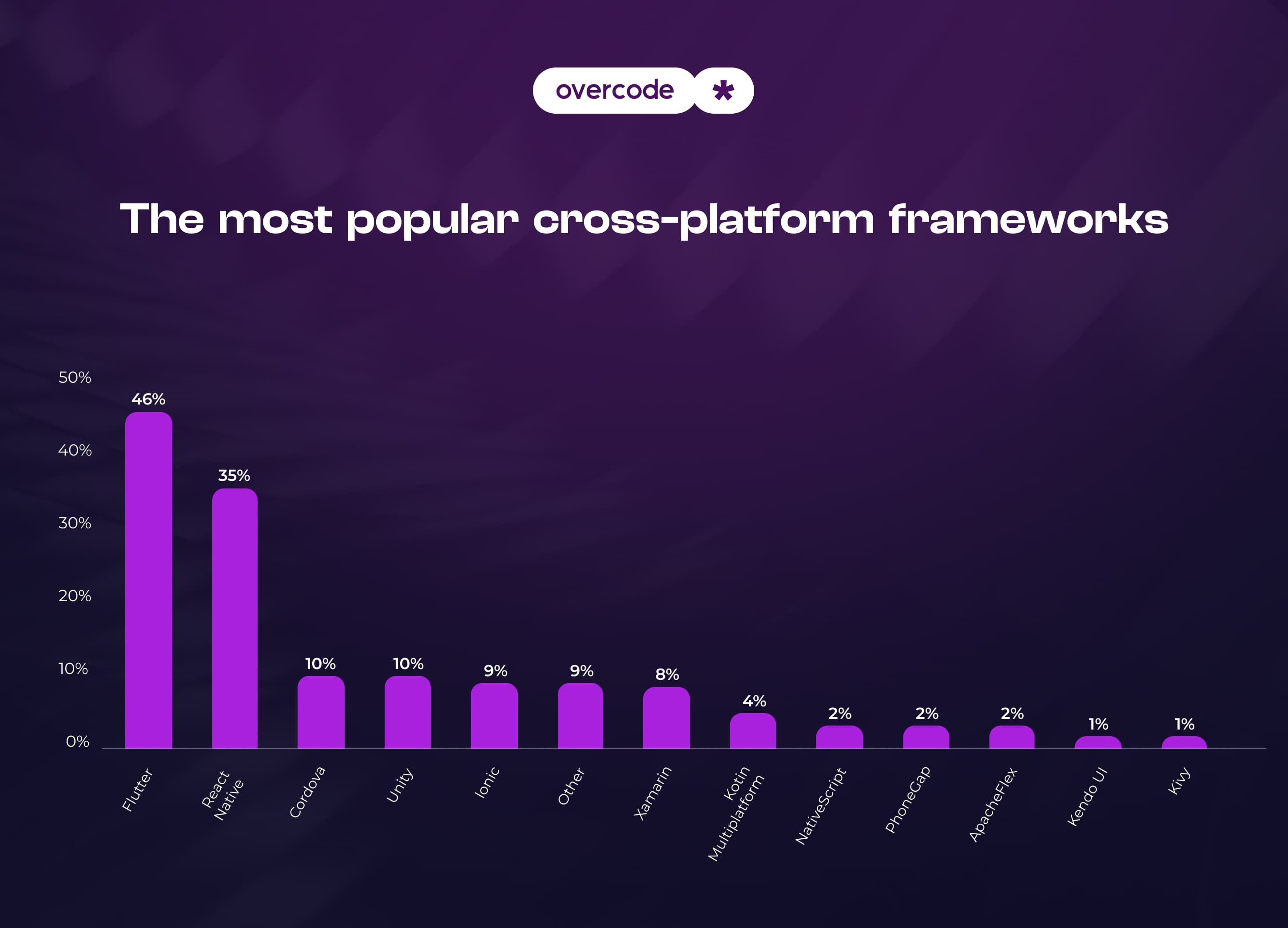
React Native
One of the most widely used cross-platform frameworks, it’s built on ReactJS — the popular JavaScript library for user interfaces. It means your developers can use a single codebase and familiar front-end logic to build apps for both Android and iOS.
What makes React Native so attractive is its large ecosystem. From pre-built libraries and UI components to thousands of community tips on GitHub or Reddit, there’s help at every step.
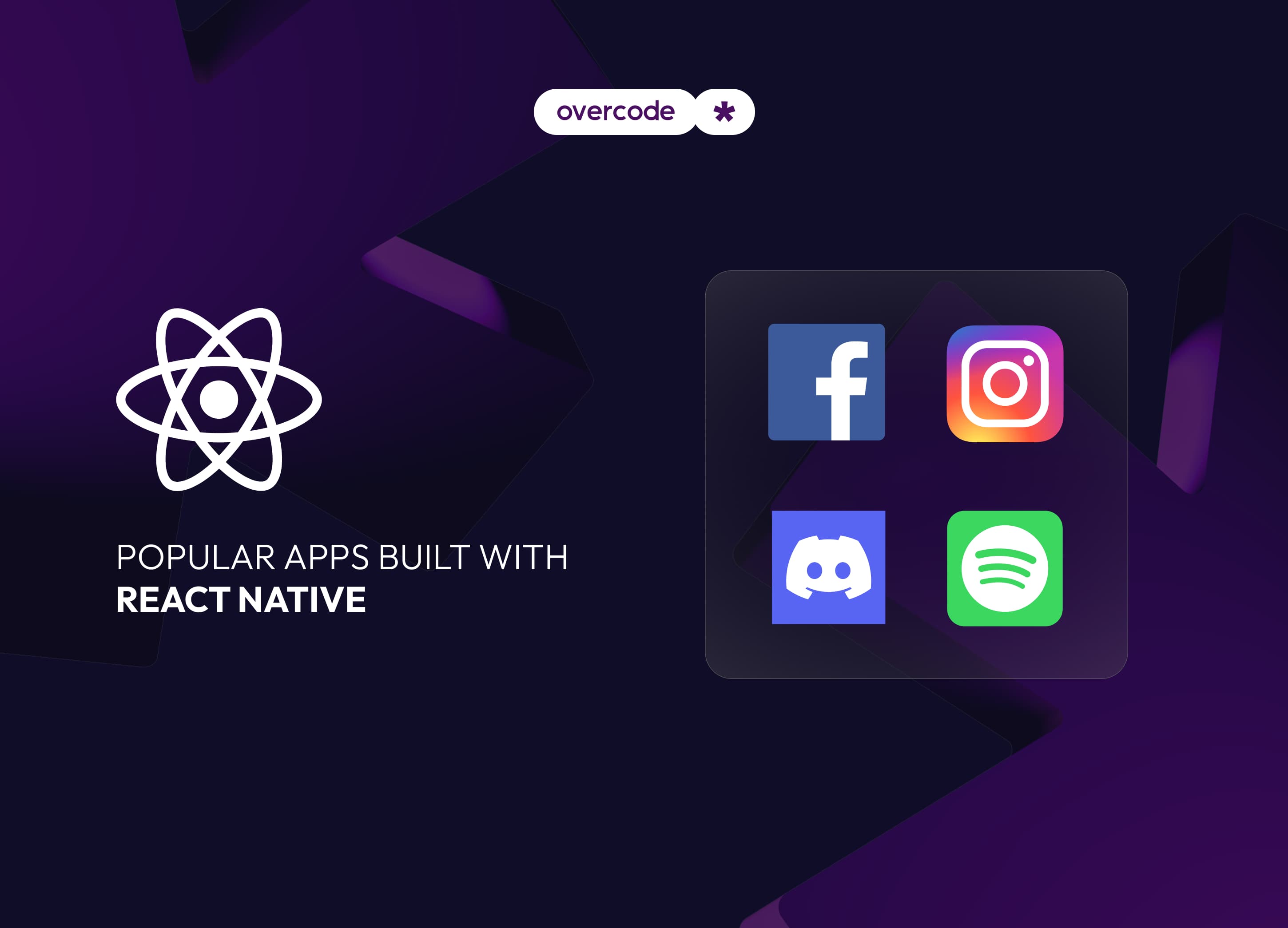
At Overcode, we choose React Native when fast iteration, shared code, and predictable performance matter. Thanks to its direct bindings to native components, apps built with React Native run close to native speed, with consistent UX across platforms.
Flutter
Built by Google, Flutter is a very popular cross-platform framework that uses Dart programming language and comes with its own rendering engine. It supports native features like camera, GPS, and file access via platform channels. It means developers can still use platform-specific code when needed.
flutter/flutter continues to rank among the top open-source projects by contributors on GitHub, reflecting their popularity and community strength. Speaking about community, Flutter has a thriving one with a variety of blogs and forums like:
The flutter-dev Google Group, the source for assistance with technical issues.
The flutter-dev subreddit, the official Reddit Flutter community.
Flutter Awesome, offering tutorials, libraries, UIs, apps, and more.
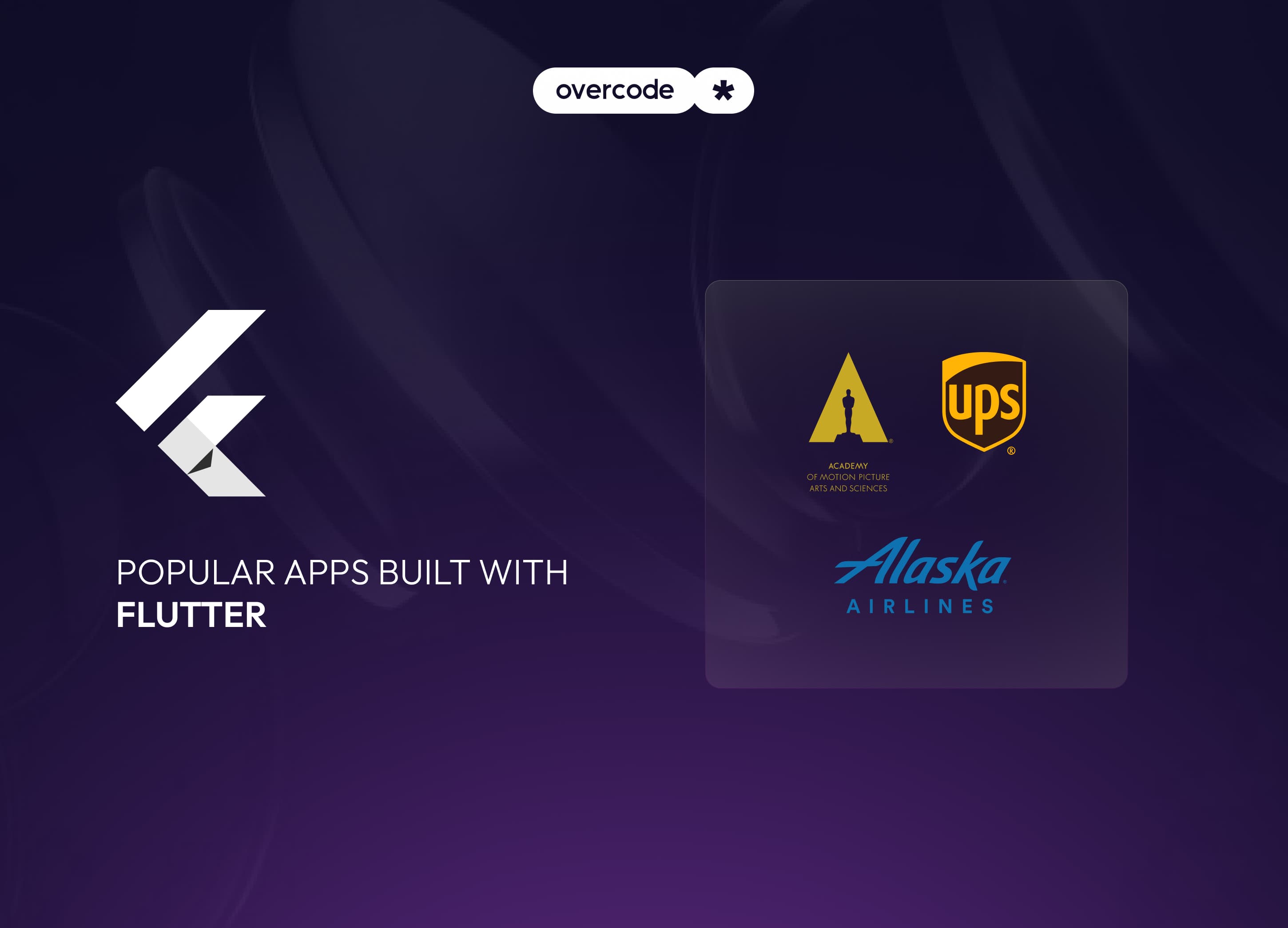
Since Flutter shares both UI and business logic across platforms, it’s especially useful for projects where visual consistency matters. It also performs well in CPU- and GPU-intensive apps.
Xamarin
Xamarin is backed by Microsoft and works well for teams already using C# and .NET. You can reuse most of the codebase across platforms. It does save development time compared to iOS and Android app development, especially for apps with a lot of shared logic.
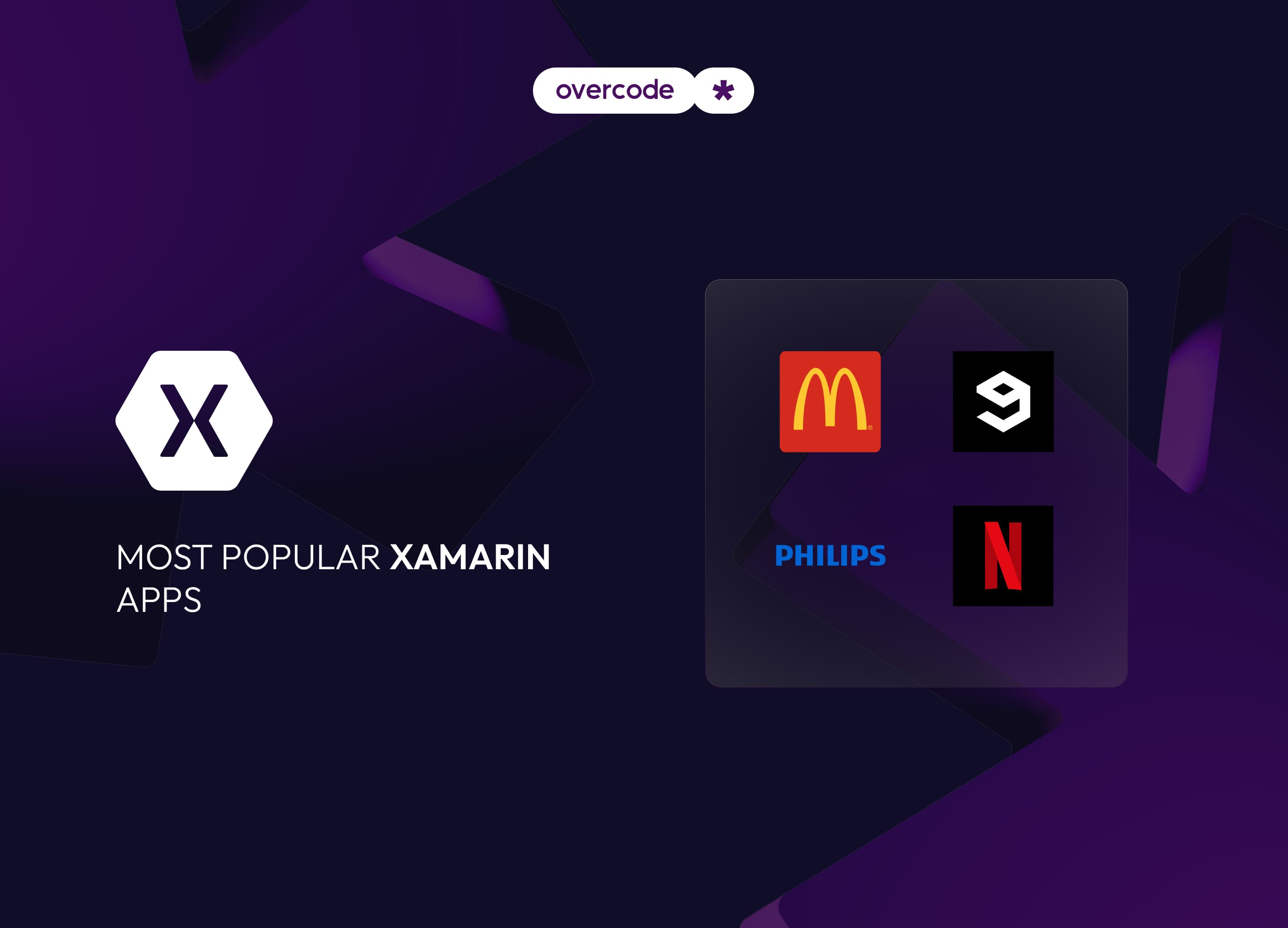
It compiles to native code, so performance is generally solid. Xamarin also gives full access to native APIs, which helps if you need platform-specific features. But for complex, highly customized UIs, Xamarin.Forms can feel limiting and sometimes slower to render than fully native solutions.
It’s often chosen for enterprise-level apps where long-term support, integration with Microsoft tools, and shared code are more important than having the most visually polished UI.
Kotlin Multiplatform
Kotlin Multiplatform lets you share the business logic of Android, iOS, web, and desktop apps while still developing native UIs for each platform. Developed by JetBrains, the team behind Kotlin, it integrates well with existing Kotlin Android projects and provides first-class support in IntelliJ IDEA.
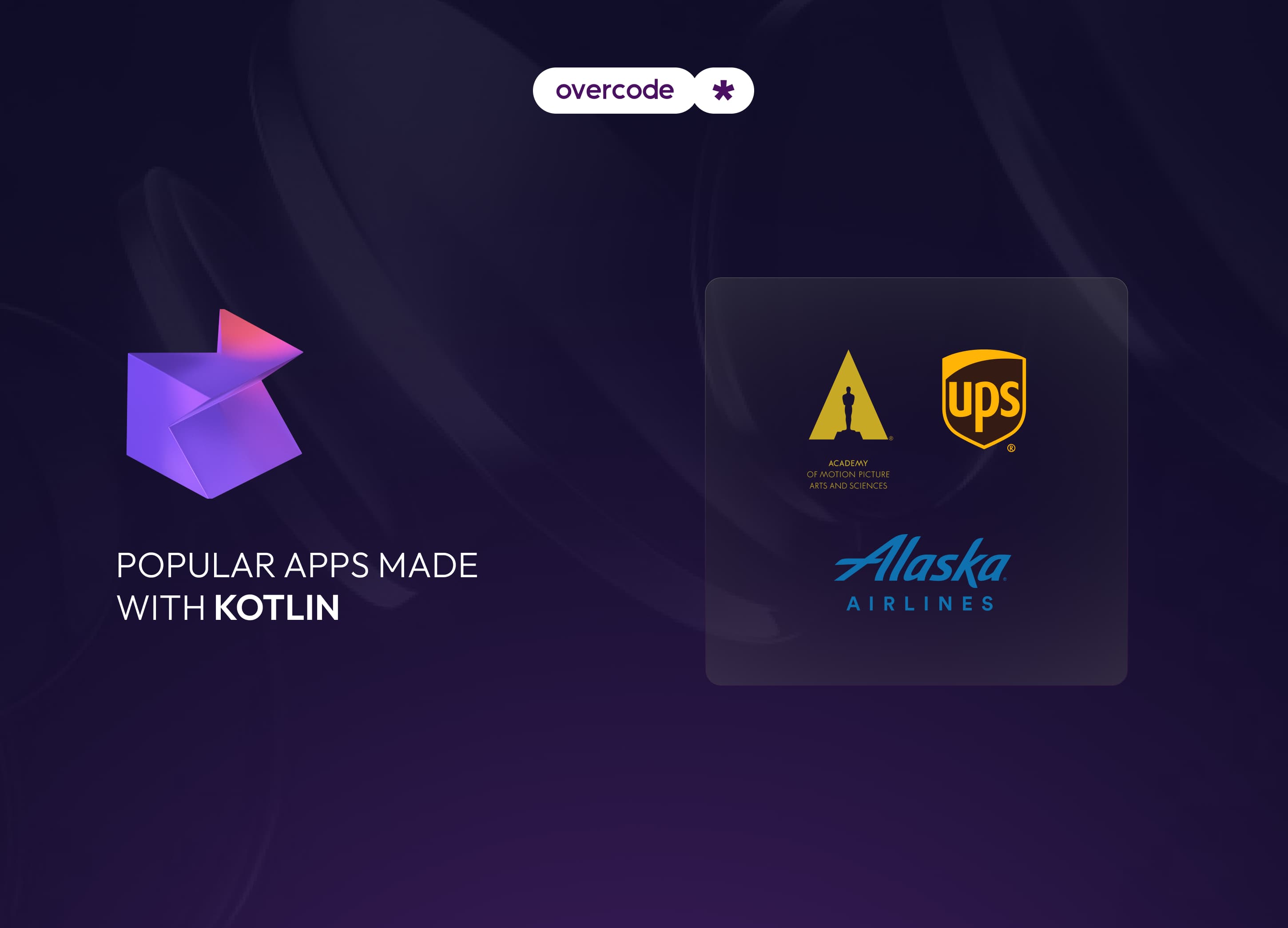
It’s still evolving, so it may have a few rough edges, especially compared to more mature frameworks. But for Android-heavy projects or those already using Kotlin, it’s a solid and modern option that doesn’t force you into a one-size-fits-all approach.
Need to accelerate your launch timeline?
Talk to our team about building for iOS and Android — without doubling the effort.
Popular cross-platform frameworks: Comparison table
| Framework | Pros | Cons | Best For | Real Apps |
|---|---|---|---|---|
| React Native | Large ecosystem, fast dev, near-native UX | Can lag with complex UIs | Shared UI + logic, fast MVPs | Facebook, Instagram, Discord, Shopify |
| Flutter | Full UI sharing, smooth animations | Bigger app size, niche language | Custom UIs, GPU-heavy apps, MVPs | CA24 Mobile (Credit Agricole Bank), Compra Certa marketplace (Whirpool), Google’s flagship products (Google Ads, Google Pay, Google Classroom, YouTube Create, and more), eBay Motors, Xianyu |
| Xamarin | C#/.NET reuse, native API access | UI flexibility limits, heavier UI | Enterprise apps in the Microsoft stack | Academy of Motion Picture Arts and Sciences (member engagement and event apps), UPS, Alaska Airlines |
| Kotlin MPP | Native UI, shared logic, Android-native | Still evolving, small community | Android teams, complex native UIs | McDonald’s Global Mobile App, 9GAG, Philips, Netflix internal tools |
Benefits of cross-platform app development
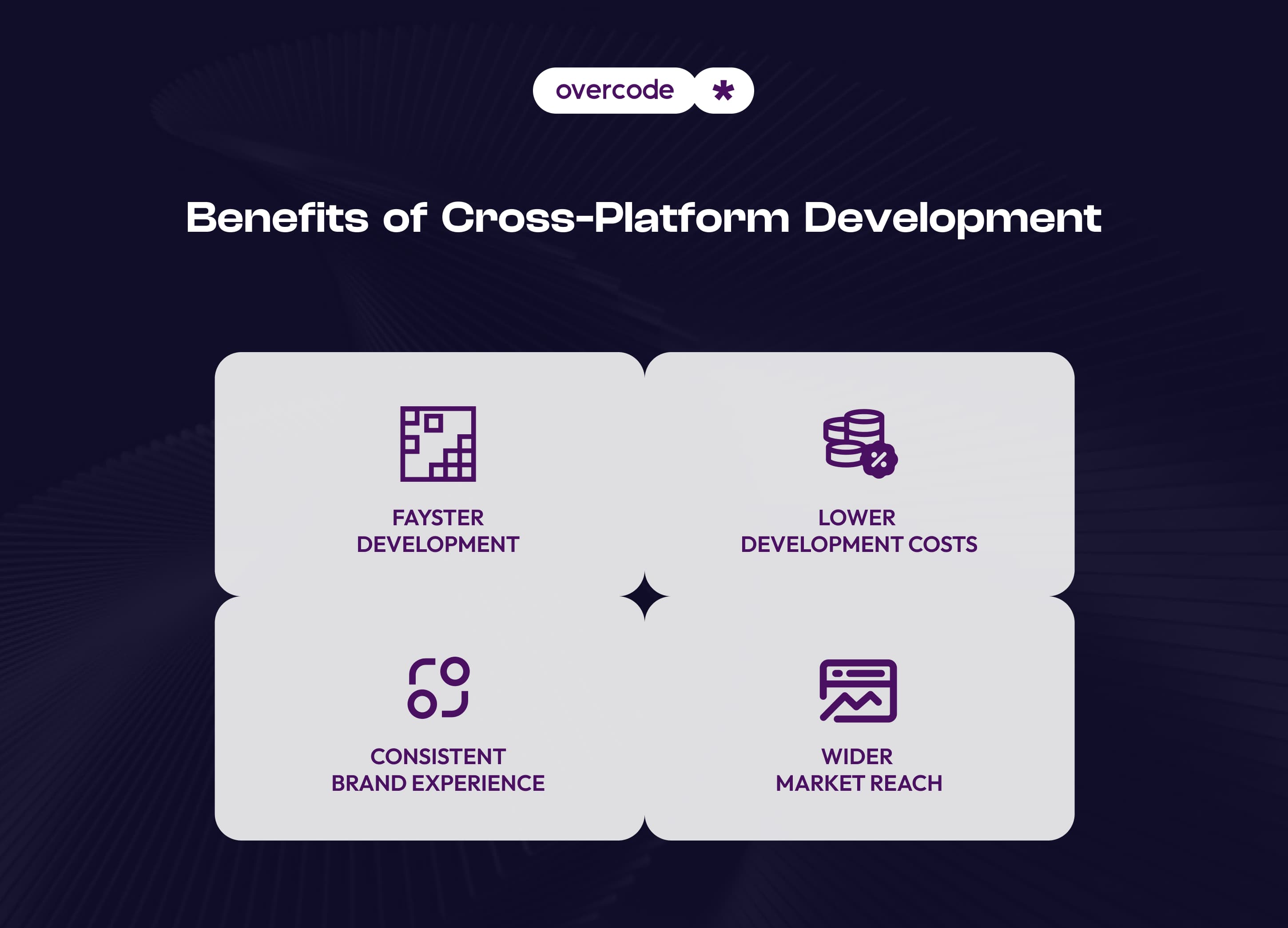
Early cross-platform development services focused primarily on cost savings, often at the expense of performance or user experience. Today’s cross-platform frameworks have closed that gap, offering solid performance, native-like interfaces, and real business value through:
Cost-effective app development
Your business objective: To reduce development expenses while maintaining quality.
Cross-platform development helps achieve this by significantly reducing the number of developers required. Instead of building separate apps for each platform, you can streamline the process and often work with a smaller team. This directly cuts costs related to personnel and resource allocation.
What’s even more profitable is that this effect extends across the entire app lifecycle, particularly in maintenance. Updates, bug fixes, and new features are all applied to a single codebase, reducing long-term costs, which are a substantial part of an app’s total budget.
Here’s a quick cost comparison:
| Platform Choice | Average Price (Approx.) |
|---|---|
| iOS app | $50,000–$250,000 |
| Android app | $45,000–$250,000 |
| Cross-platform | $35,000–$150,000 |
Savings include between 20% and 50% compared to native app development. This translates to $10,000 to $150,000 in savings, depending on the complexity of your project.
Note: Figures in the table are rough estimates for a medium-complexity app, as development costs vary with the selected features, integrations, tech stack, and other factors.
For example, Whirlpool reduced development time by 50% on one of their projects, using Flutter, enabling a faster release without compromising quality.
Concerned about budget constraints?
Cross-platform development can help you launch without overspending.
Wider market reach
Your business objective: Reach both iOS and Android users without separate investments.
As of early 2025, Android leads the mobile OS market with about 71.88% share, while iOS holds around 27.65%. So, how should you prioritize your user base — and more importantly, why? Going cross-platform from the start is a proven strategy used by tech titans like Instagram and Facebook in their early days to reach both sides of the market without doubling their efforts.
Faster deployment and scalability
Your business objective: Launch quickly and scale efficiently.
Cross-platform frameworks speed development up by reusing up to 90% of the code across iOS and Android. Fewer repetitive tasks and faster rollouts are perfect for lean teams. You can launch on one platform and follow up with the second in no time.
For instance, in the Whirlpool case, they saw a 35% boost in development speed when using Flutter for their marketplace project.
Moreover, over-the-air (OTA) updates — common in these frameworks — let you push changes or bug fixes without making users download a new app version.
Consistent brand experience
Your business objective: Maintain the app's UI/UX consistency across platforms.
Instead of relying on two separate teams to interpret design specs their own way, you work with a shared codebase and reusable UI components. A cross-platform development approach keeps your app’s design and behavior consistent across iOS and Android. Buttons, layouts, and interactions look and feel the same, no matter the device.
It’s a practical way to avoid mismatched styles and protect your brand identity without extra coordination hassle.
Pain points that cross-platform development solves
Think of custom cross-platform app development — developers build the app's functionality, interface, and backend logic specifically for your product, but they do it once, and it works for more than a single platform.
Yes, the benefits of cross-platform app development are tangible — here’s what it helps you avoid:
High development costs
Building separate native apps for iOS and Android often means hiring two teams or at least two specialized engineers so they can write two codebases. In this case, the multiplied development effort is directly proportional to the increased cost. For instance, a typical MVP built natively can cost 30–40% more than a cross-platform version due to duplicated work.
Cross-platform frameworks allow up to 90% code reuse, meaning you don’t need to hire separate engineers for each platform. According to a recent Flutter survey, 56.4% of CTOs said Flutter development is more than 50% faster than native, while 24.8% reported at least 20% faster delivery times.
Complex maintenance & updates
Native apps require fixing bugs and updating features separately for iOS and Android. It, again, doubles the engineering effort, time, and QA load. This often pushes maintenance to 40–60% of the total app’s lifecycle budget.
Cross-platform development cuts maintenance expenses significantly thanks to sharing code, minimizing inconsistencies, and speeding up updates. This is especially valuable in the first year when maintenance can eat up to 50% of your total budget (from our experience, later, it subsides to 15-25%).
Slow time to market
Even a 3–4 week launch delay can cost you investor trust or first-mover advantage in fast-moving markets. By following a native development path, you're likely to face rollout delays, as it entails building, testing, and deploying apps separately for each platform, doubling the timeline. Especially when you're launching an MVP, cross-platform development is often the smarter, faster route.
Inconsistent user experience
Native approach advocates often say that iOS and Android app development offers the best user experience, and they’re right. No cross-platform framework can fully mimic every tiny native detail.
However, when you have separate native teams working on the same app, it’s surprisingly easy for design and behavior to drift apart. Buttons look slightly different, layouts shift, or features behave inconsistently. It happens more often than you’d think, especially without tight coordination.
A cross-platform app development means one team, one design system, and one experience. Sure, you might miss out on a few advanced native touches, like iOS’s fluid gesture navigation or Android’s native Material animations. But if your goal is consistency and clarity, cross-platform gets you there.
Cross-platform app development challenges & ways to handle them
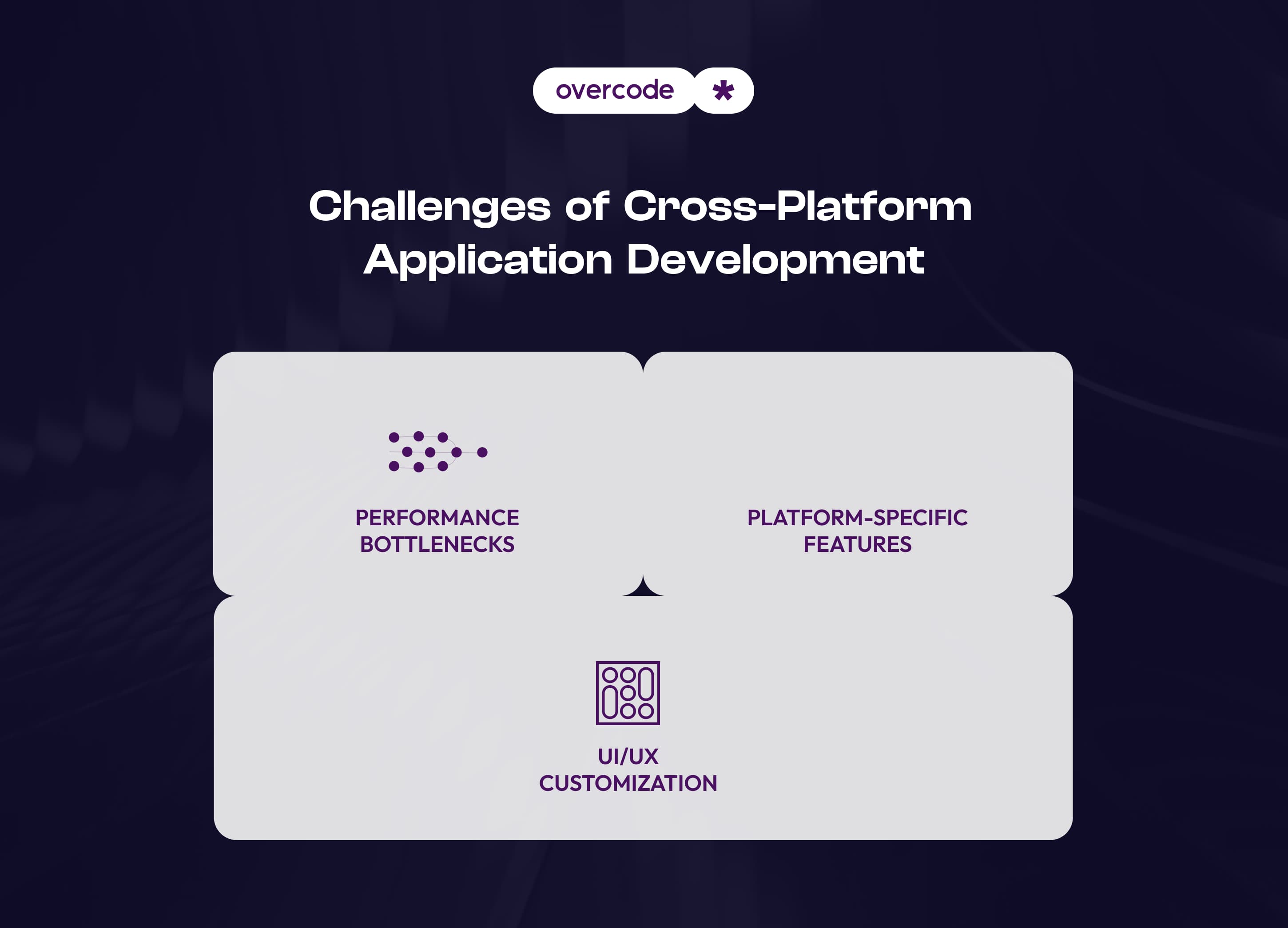
After learning about the major benefits of cross-platform app development, you might wonder if something is still left on the flip side. So we’ve put together a list of common challenges — and how technical teams usually deal with them in practice.
Performance bottlenecks
Cross-platform frameworks are great for speed and code reuse but can struggle with heavy tasks like real-time video processing, large maps, or advanced animations. That’s because the shared layer, whether it’s JavaScript, Dart, or C#, may not be fast enough for everything, depending on the framework you use.
When things start to feel sluggish, engineers can isolate or offload these demanding components and implement them in native code like Swift, Kotlin, or Objective-C. Most modern frameworks support this flexibility with native modules, platform channels, or native bindings. This hybrid approach lets you keep the benefits of code reuse while giving critical parts the needed performance boost.
Platform-specific features
Each mobile platform may have its own way of dealing with such elements as permissions, gestures, push notifications, background services, and even UI conventions. Cross-platform frameworks can cover a lot, but they don’t always provide all native features.
If your app needs something OS-specific, like Face ID on iPhone or background location tracking on Android, you might need a dedicated iOS and Android development team to write custom native code or integrate third-party plugins.This adds complexity, especially when it comes to keeping features consistent across different platforms.
The good news is that most mature frameworks can handle many of these issues — React Native has native modules, Flutter uses platform channels, and Xamarin lets you mix in native APIs. If your app needs to rely heavily on native features, you just have to be prepared for extra testing and maintenance.
UI/UX customization
One-size-fits-all is a hazardous approach in mobile app design. iOS and Android have different design guidelines, gestures, and user expectations. What feels native on one platform might feel off on the other.
Cross-platform frameworks help with shared components, but sometimes you’ll need to tweak layouts, navigation, or styling for each OS. Most tools let you do this: React Native supports platform-specific code blocks, Flutter offers conditional rendering, and Xamarin lets you customize views per platform. It’s a bit of extra work but it’s worth it for a more polished, native feel.
Custom cross-platform development is worth it when you aim for faster delivery, wider market reach, and lower development costs. With this approach, you won't cut corners on quality as modern frameworks like Flutter, React Native, and Kotlin Multiplatform have matured enough to power both MVPs and full-scale, performance-heavy apps.
Still, you may hear some concerns like slower performance, limited access to native APIs, and a user experience that “doesn’t quite feel right” compared to iOS and Android app development. These points are often exaggerated and don’t make cross-platform development a bad idea; they just make it a technical challenge worth solving.
Startups, enterprises, and even tech giants go for app development cross-platform to get to market quicker, iterate faster, and serve both iOS and Android users without doubling their efforts. With the right tech partner, you’ll also see the real business value cross-platform app development can bring.
Still unsure what tech stack fits your roadmap?
Let’s discuss it together and find the best solution for your project.



